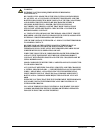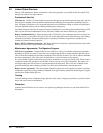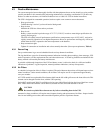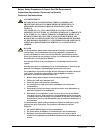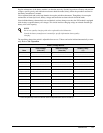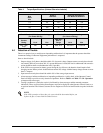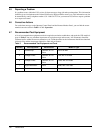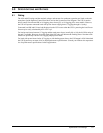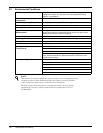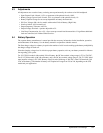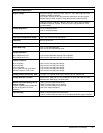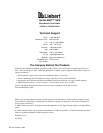
Maintenance 115
4.4 Detection of Trouble
There is no practical way to anticipate an impending malfunction. It is important that the operator check the
instrument readings if abnormal equipment performance is suspected.
Items to check include:
1. Output voltage of all phases should be within 2% of normal voltage. Output currents on each phase should
not normally differ by more than 20%. If a greater difference is noted, the load is unbalanced and corrective
action should be taken to redistribute the load, if possible.
2. If the UPS has not operated on battery power during the last 10 hours, the batteries should require little
charging current. Battery mimic should indicate normal DC voltage with the battery charge current no more
than 31 Amperes.
3. Input current on each phase should be within 10% of the average input current.
4. Alarm messages indicate malfunction or impending malfunction. A daily check of the Operator Control
Panel will help to provide an early detection of problems. Refer to Table 1 and Table 2 in 3.0 - Operation
to interpret alarm messages.
5. Tracing a problem to a particular section is facilitated by alarm messages and the metered parameter
indications. These are stored in the Status Reports and can be displayed at the Operator Control Panel or at
an optional terminal. The Liebert Customer Service Engineer will also be familiar with test points inside the
unit.
Table 4 Torque Specifications (Unless Otherwise Labeled)
Nut and Bolt Combinations
Bolt
Shaft
Size
Grade 2
Standard
Electrical Connections
with Belleville Washers
Lb-in N-m Lb-in N-m
1/4 53 6.0 46 5.2
5/16 107 12 60 6.8
3/8 192 22 95 11
1/2 428 48 256 29
Circuit Breakers With Compression Lugs
(For Power Wiring)
Terminal Block Compression Lugs
(For Control Wiring)
Current
Rating
Lb-in N-m
AWG Wire
Size or
Range
Lb-in N-m
400 - 1200
Amps
300 34 #22 - #14 3.5 to 5.3 0.4 to 0.6
NOTE
If the UPS system has a blown fuse, the cause should be determined before you
replace the fuse. Contact Liebert Global Services.



